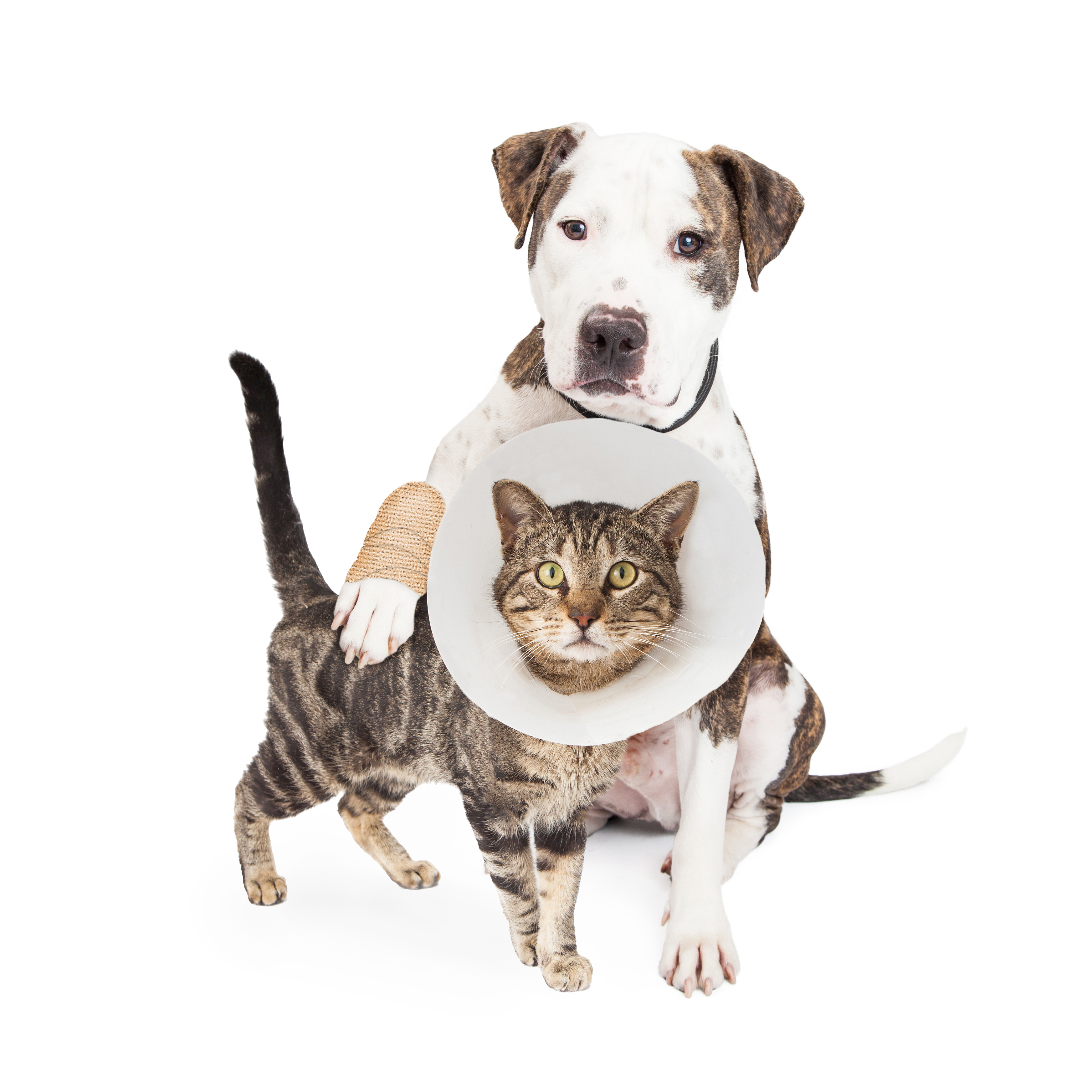How to recognize the common signs of pain in animals
It’s not uncommon for pets to get injured. With all the outdoor activities and rough-and-tumble play throughout the day, accidents are certainly unavoidable. While injuries are a source of pain for many animals, health ailments are also responsible for pain and discomfort in pets. Pain commonly causes changes in an animal’s demeanor and often indicates that they are experiencing discomfort. Behaviors like whimpering, anxiety, and other changes are the ways our animals communicate to us that there is something wrong and they need our help.
Dogs and cats have different ways of showing pain, but there is some overlap in the behaviors that these animals display if they’re feeling under the weather. Some of these shared behaviors may include:
- Decrease or loss of appetite
- Quiet or submissive behavior
- Hissing, howling, whimpering or growling
- Increased and excessive grooming, licking self, biting self, etc.
While there are many similar pain-related behaviors among dogs and cats, here are some symptoms that can often be unique to each animal.
Signs of Dog Pain
Unique to dogs, these indicators can signal that a trip to the vet is in order:
-
- Increased aggression. Unlike cats, dogs can display aggression if they aren’t feeling well. Don’t take this behavior personally. Aggression when sick is known as a defense mechanism used to protect against unwanted bothering.
- Restlessness. A dog in pain may not be able to settle down comfortably. If your dog seems agitated and stiff, watch for a limp and lethargy – these can be important clues for recognizing hip pain or arthritis. A dog that arches their back or tends to stretch more than usual may also be indicating back pain or spinal issues.
- Squinting. Dogs with eye pain may react by squinting. Smaller pupils can also be an indication of pain. Corneal ulcers and other eye diseases should be treated immediately to reduce the chances of permanent damage.
Signs of Cat Pain
Often quiet and lackadaisical, it can be hard to know when these creatures are hurting. So how exactly do you know if a cat is in pain? Keep a lookout for these behaviors:
- Hiding. Hiding is one way that cats can ensure that they won’t be bothered. Typically social creatures, a cat that’s in hiding for long periods of time may be a sign of something awry.
- Hunching posture. A change in posture can signal a cat in pain. Sitting with their paws underneath them, showing disinterest in their surroundings or sitting alone could indicate a number of different health ailments, including abdominal pain, constipation, urinary infections and in some cases an abscess, cancer, pancreatitis, feline panleukopenia, or gastrointestinal obstruction.
- Trouble using the litter box. Back or hip pain can prevent a cat from crouching in the right position to use the litter box. Feces and urine on the sides of the box may hint that your cat is having some mobility issues.
What to do when your dog or cat shows signs of pain
If your pet is exhibiting one or more of these behaviors, it’s best to take them in for a visit with your veterinarian. Even though animals can be masters at masking their injury or ailments, it’s important that you still take your pet to the vet for further examination. There are many options available to treat pain in animals including analgesic medications, physical rehabilitation, acupuncture, laser therapy, and therapeutic massage. Your vet can provide insight into what’s happening with your pet, and discuss treatment options. If you suspect your pet may be experiencing pain and discomfort, make an appointment with your vet right away. The team at AZPetVet is available 7 days a week to help you ensure your pet is living their best life, pain free.
Disclaimer: Not intended to be a substitute for professional veterinarian advice, diagnosis, or treatment. Always seek the advice of your veterinarian with any questions you may have regarding the medical condition of your pet. If you think your pet has a medical emergency, call or visit your veterinarian or your local veterinary emergency hospital immediately.


